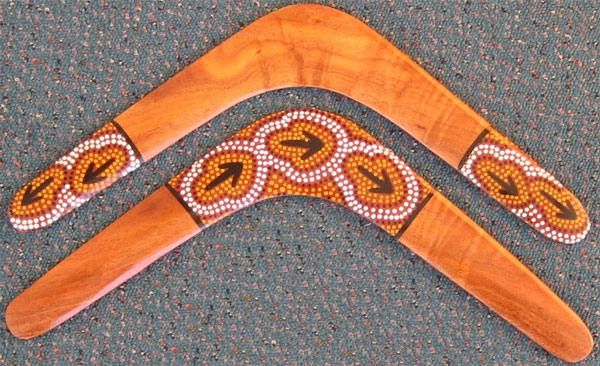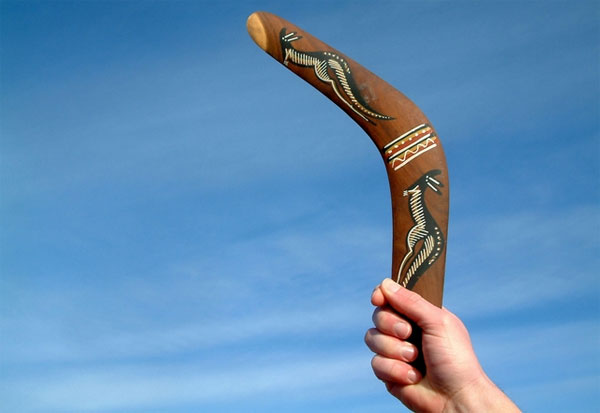What made Boomerang return to position after throwing?
Boomerang has no return ability and has been used at least 20,000-30,000 years ago and is often made from mammoth ivory. These boomerangs are used for hunting purposes, designed only to fly straight and fly in the air for as long as possible.
Prehistoric hunters may have used boomerang to throw from a far distance into an animal to enjoy dinner. These animals are usually quite small, but even larger ones such as kangaroos or ostriches can be damaged by a large boomerang. Maybe while making a normal boomerang, someone accidentally made it special. And so when thrown, it returns to the throwing position.

There is some speculation that the boomerang with the ability to return may have been used in a certain game but there is little evidence to prove this. The exact origin of the boomerang is still unknown. Archaeological evidence shows items with similar characteristics and uses to boomerangs of Australian aborigines found all over the world such as the Jaskinia Obłazowa cave in Poland dating to about 30,000 years old or as in Pharaon Tutankhamun's tomb (2000 years ago).
While there are many different ways to make a boomerang, traditionally, boomerangs are made of hard wood, horizontally cut from 90 ° to 120 °, the underside is flat, the top is slightly curved. So what makes the boomerang come back? The answer is as follows. As mentioned, the boomerang has 2 wings with an opening of 90-120 °. When thrown horizontally with a large rotating speed, the 2 boomerang wings will create the same lift force as the large rotor of a helicopter.

The difference is that, due to the two wings forming an obtuse angle, the boomerang will fly in an elliptical curve and return to the correct thrower position if correctly designed. In addition, it is the air pressure on the curved surface with the twisting motion that throws the boomerang around and returns. The right-handed person throws a boomerang that rotates counterclockwise and it will return to the left handler (as opposed to left-handed).
Boomerang users certainly understand that throwing it back is not simple. In order for the boomerang to return, you must adhere to certain guidelines. First, don't throw straight towards the wind direction . Focus on 45 ° off the wind to the right (or to the left if your boomerang is designed for the left hand). With a flick of the wrist to turn the boomerang (if the wrist is not fluttering, the boomerang will not fly smoothly), throw the boomerang forward and reach about 10 ° higher. Tilt your arm about 5 ° -20 ° If it goes too far, you have to limit the amplitude to release your elbow and actively shake your wrists more.




- Boomerang - The coldest region in the universe
- In the universe, the boomerang still flies back
- Perfect throwing shots
- The pitch to upgrade humans
- Do you know that you are throwing the carton of milk the wrong way?
- Discover the 4 most 'sweet' festivals in the world
- This is the most dangerous sitting position when you are on a car
- Strange festivals but attract customers all over the planet
- What is 'turn on finger'?
- Why do chimpanzees often ... throw feces on visitors?
- 'Wild beasts' throwing stones at the cemetery
- How to make the ice on the water go the farthest?
 'Fine laughs' - Scary and painful torture in ancient times
'Fine laughs' - Scary and painful torture in ancient times The sequence of numbers 142857 of the Egyptian pyramids is known as the strangest number in the world - Why?
The sequence of numbers 142857 of the Egyptian pyramids is known as the strangest number in the world - Why? History of the iron
History of the iron What is alum?
What is alum? Boomerang - The coldest region in the universe
Boomerang - The coldest region in the universe 